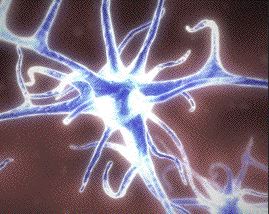Direct electrical stimulation of the brain is not biofeedback or neurofeedback, but there is a safe and minimal form we have been using at EEGym® for a couple of years: direct transcranial stimulation, tDCS. A study out this week in the Archives of General Psychiatry Online reported by the American
Psychiatric Association seems to point to its effectiveness and safety for Major Depression. I’ll be discussing this in more depth, shortly. In the meantime here is the report.
Small Study: Brain Stimulation, Along With Medications, May Ease MDD.Reuters(2/7, Pittman) reports that using the selective serotonin reuptake inhibitor antidepressant Zoloft (sertraline) together with transcranial direct current stimulation (tDCS) of the brain may benefit people suffering from moderate to severe major depressive disorder (MDD), according to a study published online Feb. 6 in JAMA Psychiatry. While medication or brain stimulation both have some effect on depression, combining the two treatments for six weeks caused about two-thirds of the 120 patients in the study to feel much better. On its own, however, tDCS was about as efficacious as medication alone. HealthDay (2/7, Reinberg) explains that tDCS is a “painless treatment” using “a low-intensity electrical current to stimulate specific parts of the brain. Previously, it has been tested for various conditions, such as stroke, anxiety, pain and Parkinson’s disease.” HealthDay notes that tDCS is currently “not approved by the US Food and Drug Administration to treat any condition.” However, transcranial magnetic stimulation (TMS) is approved by the FDA. MedPage Today (2/7, Phend) reports, “The weak electrical current applied across large electrodes on the scalp may work by boosting activity in an area of the brain known to be hypoactive in depression, with the advantage of not having the same adverse effects and contraindications as antidepressant drugs, the group pointed out.” Additionally, “the device…is relatively inexpensive, so it might be a ‘cost-effective alternative for regions with low resources where the prevalence of major depressive disorder is high, such as most developing nations,’ they added.” Nevertheless, “the treatment is less practical than taking a pill, and it’s not clear how its results would hold up in the maintenance phase.” |

